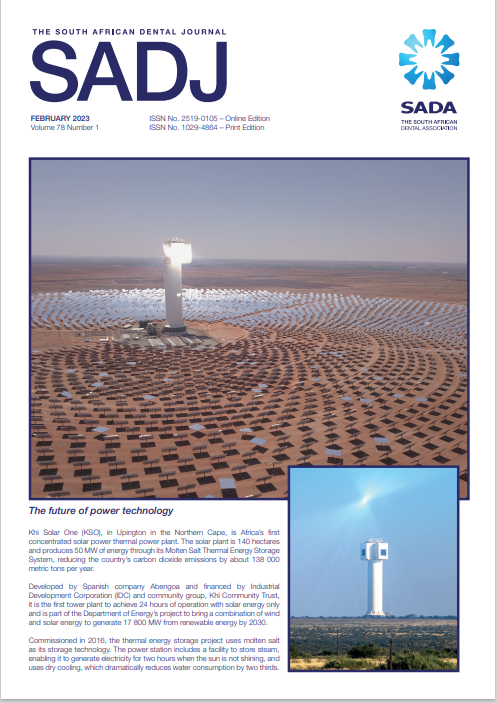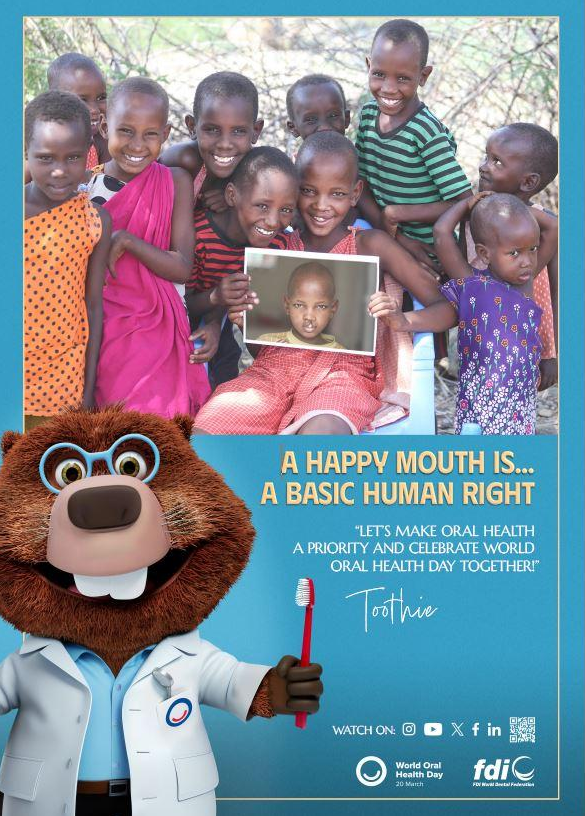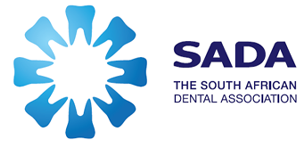Phenotypes and Clinical Genotypes of Bruxism Patients: A Systematic Review
DOI:
https://doi.org/10.17159/sadj.v78i01.15757Keywords:
bruxism, temporomandibular joint disorders, phenotype, genotype, methylation.Abstract
Background. Bruxism is a phenomenon where psychological and exogenous biological factors act in greater percentage.
Several genetic polymorphisms have been described in GABAA receptors, and some have been associated with
motor limitations, such as the rs1805057 polymorphism of the GABRB1 gene (GABAA), which found a haplotype
associated with a lower limitation in movement in acute pain processes. The aim to identify the clinical phenotypes in
bruxism patients. Eligibility criteria were as follows: observational studies, case control studies, odds ratios, bruxism, patients, and a keyword search that included [[bruxism]], OR [[temporomandibular joint disorders]] OR [[sleep bruxism]], OR [[awake bruxism]],
OR [[polymorphism]] or [[GABAA]], or [[serotonin]] , using the Boolean operators AND, OR and NOT. Were included 210 identified records in databases; 50 records from other sources; 117 records were deleted after determining they were duplicates; 42 studies were
included in qualitative synthesis ; finally, who met inclusion requirements 5 studies were included in synthesis. The comparison of global DNA methylation profiles in patients with bruxism shows a possible genetic influence on their etiology, indicating that patients with HTR2A rs2770304 alleles are at increased risk. the HTR2A rs2770304 allele leads to an increased risk of bruxism.
Downloads
References
Oporto V, Lagos G, Bornhardt S, Fuentes R, Salazar L. Are there Genetic Factors Involved in Bruxism? Int. J. Odontostomat. 2012;6(3):249-254. DOI: https://doi.org/10.4067/S0718-381X2012000300001
Iturriaga V, Bornhardt T, Oporto G.Dolor miofascial en el territorio craneocervical: Una revisión de la patología y su relación con polimorfismos genéticos del sistema GABAérgico. Avan Odotoestomat.2015; 31(4):267-271. DOI: https://doi.org/10.4321/S0213-12852015000400004
Mishra B, Wu T, Belfer I, Hodgkinson C, CohenLG, Kiselycznyk C et al.,Do motor control genes contribute to interindividual variability in decreased movement in patients with pain? Mol Pain.2007;3:20. DOI: https://doi.org/10.1186/1744-8069-3-20
Smardz J, Florjanski W, Orzeszek S, Zietek M, Wieeckiewicz M. What should a dentist be aware of concerning symptoms of sleep disorders in
the oral cavity? J Stoma. 2019; 72, 4: 172-178. DOI: https://doi.org/10.5114/jos.2019.91235
Wagner B, Moreira P. Painful temporomandibular disorder, sleep bruxism, anxiety symptoms and subjective sleep quality among military
firefighters with frequent episodic tension-type headache. A controlled study. Arq Neuropsiquiatr. 2018 Jun;76(6):387-392.doi: 10.1590/0004- DOI: https://doi.org/10.1590/0004-282x20180043
X20180043.
Castro M, Ferreira R, Fagundes N. Almeida A. Maia L. Lima R.Association betrween Psycological Stress and Periodontitis : A systematic Review.Eur J Dent. 2020;14(1):171-179. DOI: https://doi.org/10.1055/s-0039-1693507
Wagner A, Moreira P, Bernardo V. Association of bruxism and anxiety symptoms among military firefighters with frequent episodic tension
type headache and temporomandibular disorders. Arq Neuropsiquiatr. 2019;77(7):478–84. DOI: https://doi.org/10.1590/0004-282x20190069
Silva A, Sobral V, Silva R, Almeida S, Coriolano S, dos SA. Pain, click and crepitation as factors associated with temporomandibular dysfunction in Parkinson’s disease. Brazilian J Pain. 2018;1(3):248– 54. DOI: https://doi.org/10.5935/2595-0118.20180048
Lobbezoo F, Ahlberg J, Raphael KG, Wetselaar P, Glaros AG, Kato T, et al., International consensus on the assessment of bruxism: Report of a
work in progress.J Oral Rehabil . 2018 Nov;45(11):837-844. doi: 10.1111/joor.12663. Epub 2018 Jun 21. ' DOI: https://doi.org/10.1111/joor.12663
Gholampour S, Gholampour H, Khanmohammadi H. Finite element analysis of occlusal splint therapy in patients with bruxism. BMC Oral
Health. 2019;19(1):1–9. DOI: https://doi.org/10.4103/njhs.njhs_10_22
Przystanska A, Jasielska A, Ziarko M, Pobudek M, Maciejewska Z, Prylinska A, et al., Psychosocial Predictors of Bruxism. Biomed Res Int.
;2019:15–22.
Smardz J, Martynowicz H, Michalek M, Wojakowska A, Mazur G, Winocur E, et al., Sleep Bruxism and Occurrence of Temporomandibular
Disorders-Related Pain: A Polysomnographic Study. Front Neurol. 2019;10(March):1–9.
Pontes S, Prietsch S. Bruxismo do sono: estudo de base populacional em pessoas com 18 anos ou mais na cidade de Rio Grande, Rio Grande do Sul. Rev Bras Epidemiol. 2019;22(January 2016):e190038.REVIEW < 47
Paeseni D, Lobbezoo F, Gelos C, Guardca L, Alhberg J, Manfredini D. Correlation between self-reported and clinically based diagnoses of bruxism in temporomandibular disorders patients. J Oral Rehabil.2013;40:803-804. DOI: https://doi.org/10.1111/joor.12101
Oporto G, Salazar L. DNA is hypomethylated in circadian manifestations of bruxism. Oral Dis.2018;24:1132–1139. DOI: https://doi.org/10.1111/odi.12856
Oporto G, Bornhardt S , Iturriaga V, Salazar L. Genetic polymorphisms in the serotonergic system are associated with circadian manifestations of bruxism. J Oral Rehabil. 2016 43; 805–812. DOI: https://doi.org/10.1111/joor.12436
Hoashi Y, Okamoto S, Abe Y, Matsumoto T, Tanaka J, Yoshida Y, Imaizumi K, Akamatsu W, Okano H, Baba K. Generation of neural cells using iPSCs from sleep bruxism patients with 5-HT2A polymorphism.J Prostodont Res. 2017;61:242- 250. DOI: https://doi.org/10.1016/j.jpor.2016.11.003
Romain N, Gwenael R, Alexandre V, Ferri J, Sciote J, ACTN3 genotype influences masseter muscle characteristics and self-reported bruxism Oral Dis. 2021 Nov 13;10.1111/odi.14075.doi: 10.1111/odi.14075. Online ahead of print. DOI: https://doi.org/10.1111/odi.14075
Oporto G, Iturriaga V, Bornhardt S , Salazar L. Single nucleotide polymorphisms in genes of dopaminergic pathways are associated with
bruxism. Clin Oral Invest (2018) 22:331– 337. DOI: https://doi.org/10.1007/s00784-017-2117-z
Alrashdan M, Alkhader M. Psychological factors in oral mucosal and orofacial pain conditions.Eur J Dent. 2017 Oct-Dec;11(4):548-552. doi: 10.4103/ejd.ejd_11_17. DOI: https://doi.org/10.4103/ejd.ejd_11_17
Cruz N, Martinez M, Cerda R, Gomez M, Delgado I, Martinez-de Villarreal L, et.al. The phenotype, psychotype and genotype of bruxism.Biomed Rep. 20188(3):264-268.
Batista G, Lopes A, Nascimento M, Mara F, Maira L, Scariot R. et.al. Dopamine receptor D2 and ankyrin repeat domain containing one in temporomandibular disorder of adolescents. Int J Paediatr Dent. 2019;29:748–755. DOI: https://doi.org/10.1111/ipd.12544
Pontes L da S, Prietsch S. Sleep bruxism: population based study in people with 18 years or more in the city of Rio Grande. Brazil. Rev Bras Epidemiol. 2019;22:e190038. DOI: https://doi.org/10.1590/1980-549720190038
Yalçın D, Yılmaz N, Koraltan M, Aydın E. A survey on the potential relationships between TMD, possible sleep bruxism, unilateral chewing, and occlusal factors in Turkish university students. Cranio . 2017;35(5). DOI: https://doi.org/10.1080/08869634.2016.1239851
Cinel S, Dere K. Quality of information in “masseter Botox” videos on YouTube: is it a sufficient guide for potential patients?. J Stoma 2020; 73, 6: 313-325. DOI: https://doi.org/10.5114/jos.2020.102050
Lobbezoo F, Ahlberg J, Glaros AG, Kato T, Koyano K, Lavigne GJ, et al.,Bruxism defined and graded: An international consensus. J Oral Rehabil . 2013 Jan;40(1):2-4. doi: 10.1111/joor.12011. Epub 2012 Nov 4. DOI: https://doi.org/10.1111/joor.12011
Manfredini D, Serra-Negra J, Carboncini F, Lobbezoo F. Current Concepts of Bruxism. Int J Prosthodont.2017;30(5):437-438. DOI: https://doi.org/10.11607/ijp.5210
Bracci A, Djukic G, Favero L, Salmaso L , Guarda-Nardini L , Manfredini D. Frequency of awake bruxism behaviours in the natural environment. A 7-day, multiple-point observation of real-time report in healthy young adults. J Oral Rehabil.2018;45(6):423- 429. DOI: https://doi.org/10.1111/joor.12627
Calvano E, Andrade do Nascimento M, Nakane M, Lourenço F, Bezerra da Silva A, Ayumi M. et.al. Genetic polymorhismin RANK is associated with mandibular size. J Orthod.2018;45(3):157-162. DOI: https://doi.org/10.1080/14653125.2018.1476018
Muzalev K , Visscher C M, Koutris M, Lobbezoo F. Long-term variability of sleep bruxism and psychological stress in patients with jaw-muscle pain: Report of two longitudinal clinical cases.J Oral Rehabil.2018;45(2):104-109. DOI: https://doi.org/10.1111/joor.12594
Goes L, Reali I, Dos Santos J, Silveira W, Silveira de Oliveira E, Douglas de Oliveira D, et.al. Prevalence of bruxism in undergraduate students.
Cranio.2017;35(5):298-303. DOI: https://doi.org/10.1080/08869634.2016.1218671
Grigoriadis, A. Koutounidou S. Raisanen, I. Arsenakis, M. Sakellari, D. Interaction between TCF7L2 rs7903146 Genotype, HbA1c Levels, and the Periodontal Status of Dental Patients. Eur J Dent.2021,15(3):495-501. DOI: https://doi.org/10.1055/s-0041-1725578
Ordoñez M, Villavicencio E, Alvarado O, Venegas E. Association among stress, depression and anxiety with diurnal bruxism prevalence. Rev
Estomatol Herediana. 2016;26(3):147-55. DOI: https://doi.org/10.20453/reh.v26i3.2958
Li Y, Jia X, Wu H, Xun G,Ou J,Zhang O. et.al. Genotype and phenotype correlations for SHANK3 de novo mutations in neurodevelopmental
disorders. Am J Med Genet A.2018;176(12):2668-2676.
Shade G, Ohrbach R, Greenspan J, Fillingim R, Bair E, Sanders A. et.al. Painful Temporomandibular Disorder: Decade of Discovery from OPPERA Studies. J Dent Res.2016;95(10):1084-92. DOI: https://doi.org/10.1177/0022034516653743
Wilmont P, Saczuk K, Pawlak L, Lukomska M. The most used methods of treatment for bruxism – a literature review. J Stoma 2018; 71, 4: 350-355. DOI: https://doi.org/10.5114/jos.2018.83409
Peters S, Fu C, Suter B, Marsh E, Benke T, Skinner S. et.al. Characterizing the phenotypic effect of Xq28 duplication size in MECP2 duplication syndrome. Clin Genet.2019;95(5):575-581. DOI: https://doi.org/10.1111/cge.13521
Limeres J, Serrano C, De Nova J, Rangil J, Machuca G, Maura I. et.al. Oral Manifestations of Wolf-Hirschhorn Syndrome: Genotype-Phenotype Correlation Analysis. J Clin Med. 2020; 9(11): 3556. DOI: https://doi.org/10.3390/jcm9113556
Rodan L, Cohen J, Fatemi A, Gillis T, Lucente D, Grusella J.et.al. A novel neurodevelopmental disorder associated with compound heterozygous variants in the huntingtin gene. Eur J Hum Genet.2016;24(12):1826-1827. DOI: https://doi.org/10.1038/ejhg.2016.74
Barclay N, Gregory A. Quantitative genetic research on sleep: a review of normal sleep, sleep disturbances and associated emotional, behavior and health-related difficulties. Sleep Med Rev.2013:17(1):29-40. DOI: https://doi.org/10.1016/j.smrv.2012.01.008
Jimenez A, Peña C, Tobar J, Frugone R. Sleep and awake bruxism in adults and its relationship with temporomandibular disorders: A systematic review from 2003 to 2014.Acta Odontol Scand.2017;75(1):36-58. DOI: https://doi.org/10.1080/00016357.2016.1247465
Dabrowska A, Syczewska M, Jelonek E , Graff K, Zadurska M, Kalinowska M , Szczerbik E, Olczak D. Epidemiology and a etiology of bruxism in children and adolescents – review of literature*. J Stoma. 2015; 68, 5: 539-558.
Manfredini D, Poggio C. Prosthodontic planning in patients with temporomandibular disorders and/or bruxism: A systematic review.2017; DOI: https://doi.org/10.1016/j.prosdent.2016.09.012
(5):606-613.
Oliveiria L, Almeida R, Castro C,Lopez K. Association between bruxism and temporomandibular disorders in children: A systematic review and meta analysis.Int J Paediatr Dent.2019.29(5):585-595. DOI: https://doi.org/10.1111/ipd.12496
Orthlieb J, Jeany M, Giraudeau A..Temporomandibular joint, occlusion and bruxism .Rev stomatol chir Maxillofac ChirOrale.2016;117(4):207-11. DOI: https://doi.org/10.1016/j.revsto.2016.07.006
Beddis H,Pemberton M,Davies S. Sleep bruxism: an overview for clinicians.Br Dent J.2018;225(6):497-501. DOI: https://doi.org/10.1038/sj.bdj.2018.757
Tago Ch, Aoki S, Sato S. Status of occlusal contact during sleep bruxism in patients who visited dental clinics - A study using Bruxchecker®.
Cranio.2018;36(3):167-173. DOI: https://doi.org/10.1080/08869634.2017.1295125
Ghafournia M, Hajenouroali M. Relationship between Bruxism and Malocclusion among Preschool Children in Isfahan. J Dent Res Dent Clin
Dent Prospects. 2012;6(4): 138-142.
Castro P, Panitz C, Rolim E, Chaves S, Lima M. The Effects of Sleeping With or Without Prostheses on Sleep Quality, Sleep Bruxism, and
Signs of Obstructive Sleep Apnea Syndrome: A Pilot Study. Int J Prosthodont.2018;31(3):197-205. DOI: https://doi.org/10.11607/ijp.5401
Lobbezoo F,Visscher C,Ahiberg J, Manfredini D. Bruxism and genetic: a review of the literature. J Oral Rehabil.2014;41:709-714. DOI: https://doi.org/10.1111/joor.12177
Smardz J , Martynowicz H , Michalek M , Wojakowska A, Mazur G , Winocur E. et.al. Sleep Bruxism and Occurrence of Temporomandibular Disorders Related Pain: A Polysomnographic Study. Front Neurol.2019;10:168. DOI: https://doi.org/10.3389/fneur.2019.00168
De la Torre G, Rigoldi L, Lorenzi R, Carvalho F, Guarda L, Rodrigues P, et.al. Correlation Between Physical and Psychosocial Findings
in a Population of Temporomandibular Disorder Patients .Int J
Downloads
Published
Issue
Section
License

This work is licensed under a Creative Commons Attribution-NonCommercial 4.0 International License.





.png)